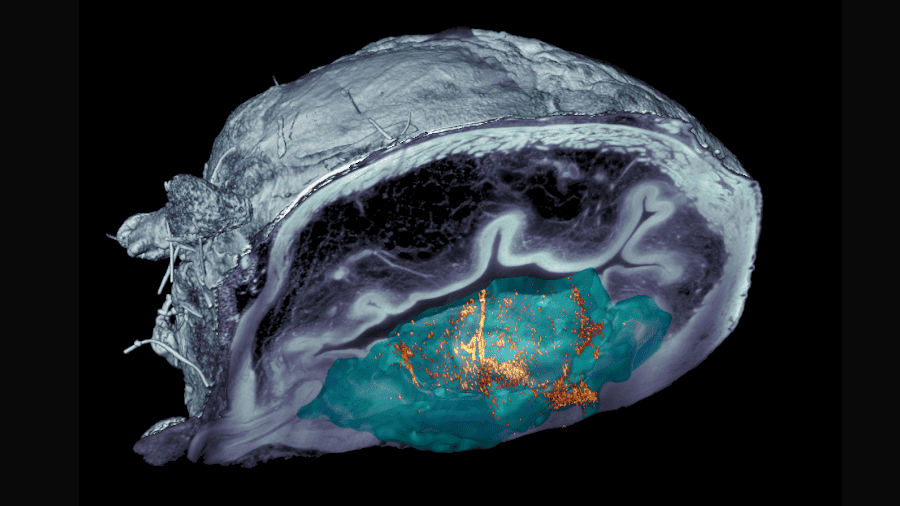Bladder cancer is one of the most common types of cancer in the world — it’s the 4th most common type of tumour in men. It usually has a high survival rate, but over a third of bladder tumors resurface within 5 years. This means patients need to have regular hospital visits and potentially invasive monitoring or intervention procedures.
Current treatments for eliminating tumors often involve surgeries and/or drug administration directly in the bladder. But in a new study, researchers worked on a different treatment delivery method: nanobots. In a study on mice, they were able to reduce the size of bladder tumors by 90%.

Bot, zap the cancer
These nanobots aren’t exactly miniaturised robots like you might envision. Rather, they’re nanoparticles that can self-propel through the body and release a chemical treatment. In this case, the nanobots consist of a porous silica sphere.
The surface of the sphere is covered with (among other things) a protein that reacts with the urea in urine and creates a propelling reaction, essentially pushing the nanobot towards the desired location. Essentially, they’re powered by urine.
Then, once the bots reach the tumour they release radioactive iodine — an isotope commonly used for localised treatment of tumors. In other words, the nanobots are perfectly equipped to reach the tumour and then zap it using radiotherapy.
The study was carried out by researchers at several institutes in Barcelona. So far, the team has only worked with mice, but have seen excellent results so far.
“With a single dose, we observed a 90% decrease in tumour volume. This is significantly more efficient than current treatments, given that patients with this type of tumour typically have between 6 and 14 hospital appointments. This therapeutic approach would increase efficiency by reducing the length of hospitalisations and the cost of the treatment,” explains lead author Samuel Sánchez from the Institute for Bioengineering of Catalonia (IBEC).
These tumors are pretty solid and nanobots don’t recognize them directly. But, through sheer chemistry, the team was able to coerce the bots into penetrating the tumors.
“We observed that these nanorobots can break down the extracellular matrix of the tumour by locally increasing the pH through a self-propelling chemical reaction. This phenomenon favoured greater tumour penetration and was beneficial in achieving preferential accumulation in the tumour,” explains Meritxell Serra Casablancas, co-first author of the study.
Monitoring the nanobots
When working on this technology, the team was faced with a pretty direct problem. How do you see where the nanobots are and what they’re doing?
Current imaging techniques (at least the conventional ones) lack the resolution to locate the tiny bots and monitor their activity. So, another team at the Institute for Research in Biomedicine developed a special technique. They started with a laser sheet that illuminates the samples. The tumor itself scatters part of the light, causing interference, so the team developed a technique that cancels out this scattering.
Thus, they allowed for the clear visualization and pinpointing of nanorobots without the need for traditional molecular labeling techniques. This innovative method can also be applied in different types of studies.
“The innovative optical system that we have developed enabled us to eliminate the light reflected by the tumour itself, allowing us to identify and locate nanoparticles throughout the organ without prior labelling, at an unprecedented resolution. We observed that the nanorobots not only reached the tumour but also entered it, thereby enhancing the action of the radiopharmaceutical,” explains Julien Colombelli, leader of the Advanced Digital Microscopy platform at IRB Barcelona.
Years of work paying off
It took years of work and a spin-off to get this result. Oftentimes, these studies seem effective in a research context but getting them into clinical, practical use is challenging. The researchers’ spin-off is only a few months old but it’s already secured funding to continue the research.
Hopefully, this work can have a real impact on patients. Jordi Llop, another study co-author, mentions that the localized administration of the nanorobots carrying the radioisotope reduces the probability of generating adverse effects. Instead of spreading elsewhere in the body where they can cause unwanted damage, the nanobots accumulate in the tumor tissue which favours the radiotherapeutic effect.
Ultimately, this also opens up the door for other types of treatments as well.
“The results of this study open the door to the use of other radioisotopes with a greater capacity to induce therapeutic effects but whose use is restricted when administered systemically,” concludes Cristina Simó, co-first author of the study.
The study was published in the Nature Nanotechnology.









